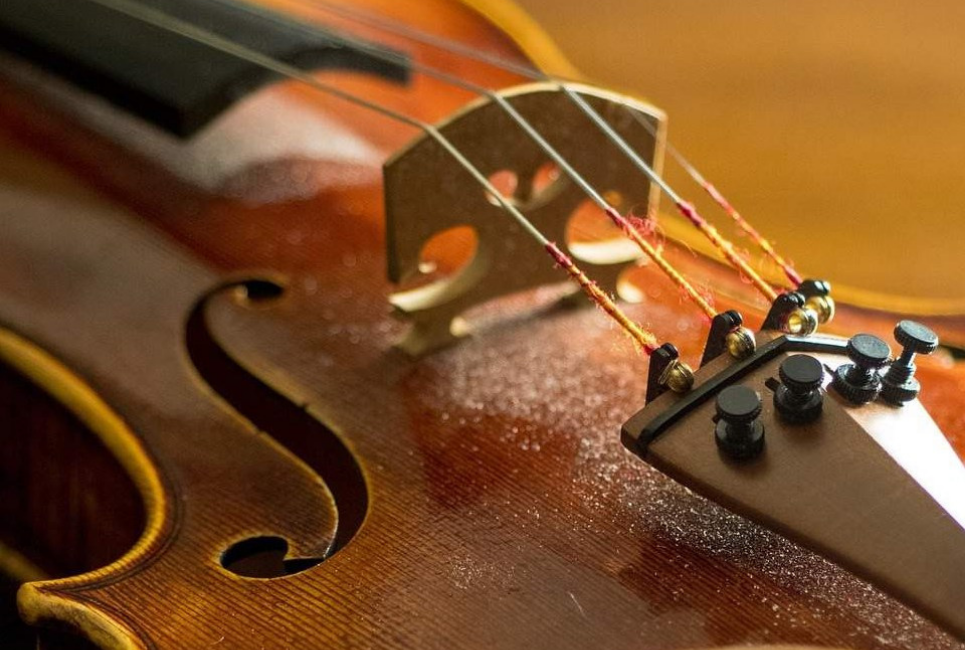- How to Find the Best Sopranino Saxophone - May 31, 2022
- How to Find the Best Contrabass Saxophone - May 30, 2022
- Trumpet Range Guide: Understanding The Entire Trumpet Range - May 19, 2022
Do you ever feel like you’re not quite in tune with other musicians? If so, you need to know how to find the best violin tuner.
A good tuner can help you get your instrument in tune, and you can make sure you place your fingers correctly on the strings. So how do you find the right tuner for your violin?
How To Find The Best Violin Tuner
Once you get the best violin for you, it’s time to learn to play it. Sure, you could pull the violin out of the case and start playing from there.
However, you may not sound very good if you don’t take the time to tune your violin. And the best way to do that is to use the best violin tuner for your needs.
Here are some steps to how to find the best violin tuner.
Understand Your Style

First, you need to think about what you want your tuner to look like and how you want to visualize the results. For example, some musicians prefer to see a half-circle with a line that goes from the center and out to show how in tune they are.
I prefer to use a more visual tuner that shows how close I am but also how close I’ve been. That way, I can tune my instrument and keep an eye on my vibrato.
If you have perfect pitch, you may prefer to use the most basic tuner you can. You won’t have to rely on tuning as much since you can use your ears.
Consider The Type
Once you know your tuning style, you can look at different types of tuners. Some of the best violin tuners sit on the instrument, and they feel the vibrations, which can be good if you’re tuning around other musicians.
Other tuners will sit on your music stand in front of you, and they can detect all sounds nearby. If you like that type of tuner, you can even download an app to your phone to turn it into a tuner.
Some tuners that sit on your stand have a cord with one end that connects to the scroll of your violin. Then, you can view the tuner from farther away but still only pick up your playing.
Know Where It Will Sit
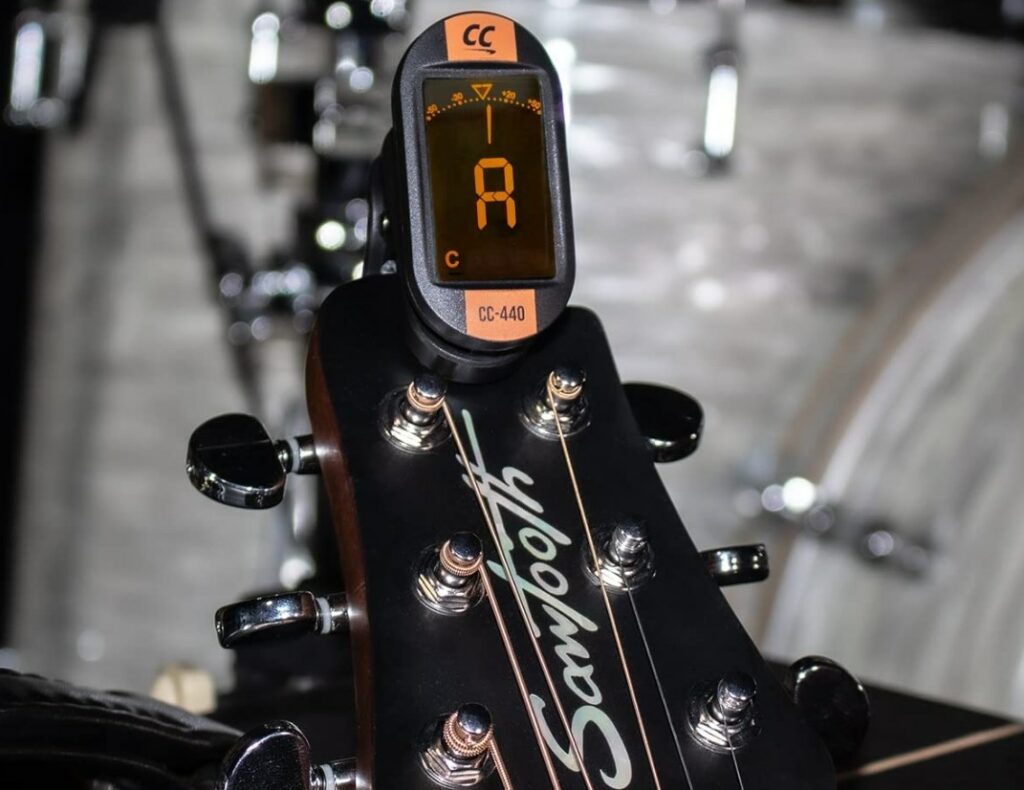
Along with choosing the type of tuner, you should consider where the tuner will go when you use it. As I mentioned, you can put some tuners right on your violin, but others need to sit on a music stand.
This can be important if you plan to use the tuner as you practice. I like walking around while I practice, especially when I play from memory, but I can’t tune with a tuner that stays on my music stand that way.
If you like to move around but want to check your tuning, consider getting a violin tuner that sits on your instrument. Then, you won’t have to stay in one place.
On the flip side, you should consider how close the tuner will sit on your violin. That way, you’ll know if you’ll be able to see the reading clearly.
Look At The Screen
Another thing that can help you decide on the best violin tuner is what the screen looks like. Some screens have good backlighting and are easy to read almost anywhere.
But other tuners don’t have a well-lit screen and so require lighting from your environment. Think about where you plan to use the tuner and if you’ll have good lighting to help see the screen.
If not, you may want to get a tuner with a bright screen. Alternatively, you can use your phone and a tuning app since most phones have bright screens.
Think About A Metronome
Some tuners are combination tuner-metronomes, so you can both tune your instrument and keep time as you play. That can be nice if you don’t have much extra space in your violin case.
Not all violin tuners have a metronome function, so consider if you want to combine the two devices into one. Then, you’ll be able to narrow your search for the best violin tuner.
Personally, I love having a tuner and metronome in one. It saves space in my music bag, and it also keeps from cluttering my music stand with a ton of small gadgets.
Determine The Pitch Of A
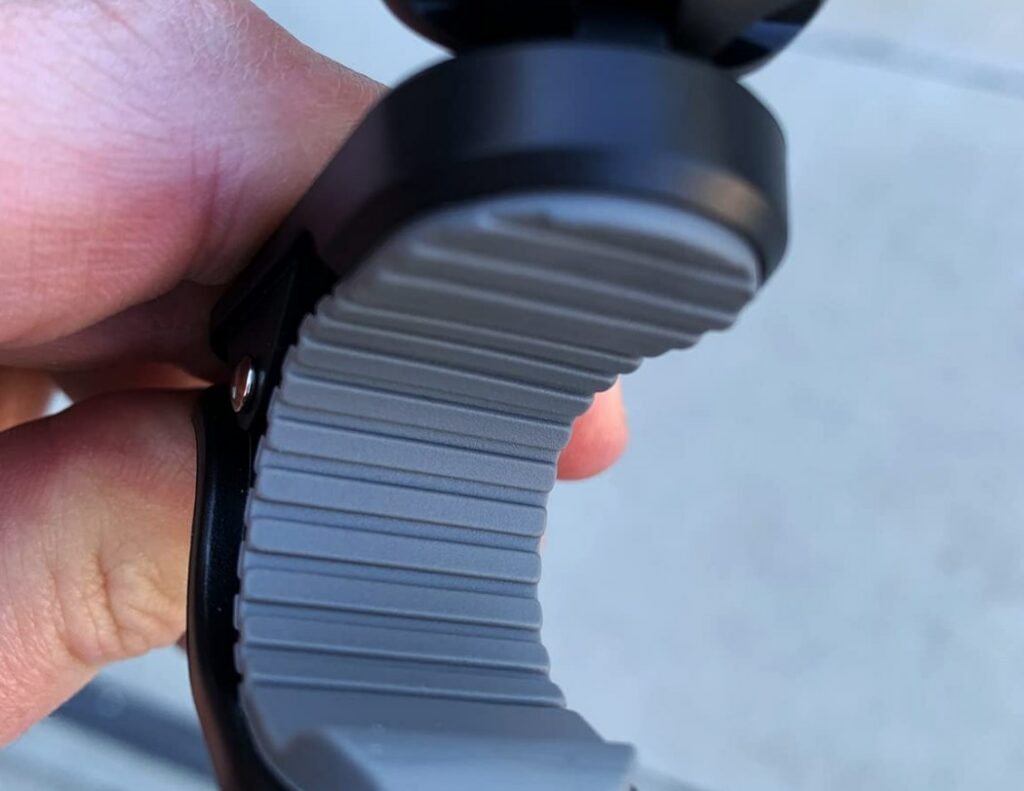
Unfortunately, not all orchestras and groups use the same tuning. The A above middle C (A4) is usually 440Hz, but the tuning can vary up to 444Hz or down to 392Hz, depending on the setting.
If you play in an orchestra, you may need to tune to A = 442 or 444. On the other hand, if you play in a Baroque music group, you could have to tune to A = 415 or 392.
Consider if your violin tuner of choice lets you set the pitch of A. If you don’t need to change it, that’s fine, but you may need to get another tuner later if you want to change the pitch.
Don’t Forget Size
You should also think about how big the violin tuner will be. This is important because it can affect the amount of storage you have in your violin case.
But when it comes to actually tuning, a tuner that sits on your violin may affect the balance. If your tuner sits on your music stand, it could take up more space if it’s bigger.
Size is one area where using a smartphone tuning app is great. Odds are, you’re already going to bring your phone, so you don’t need to take up more room in your bag.
Figure Out The Power Source
Another factor to consider in how to find the best violin tuner is what will power the tuner. A lot of tuners use batteries, so consider what type of battery a tuner uses.
Then, you can stock up on those batteries and keep a set at home or in your case. Along with that, make sure you’re able to open the battery cover and that you don’t need any special tools.
Some tuners may even have a rechargeable battery. In that case, you’ll need to keep track of the charger and take time to charge the tuner regularly.
Decide When You’ll Use It
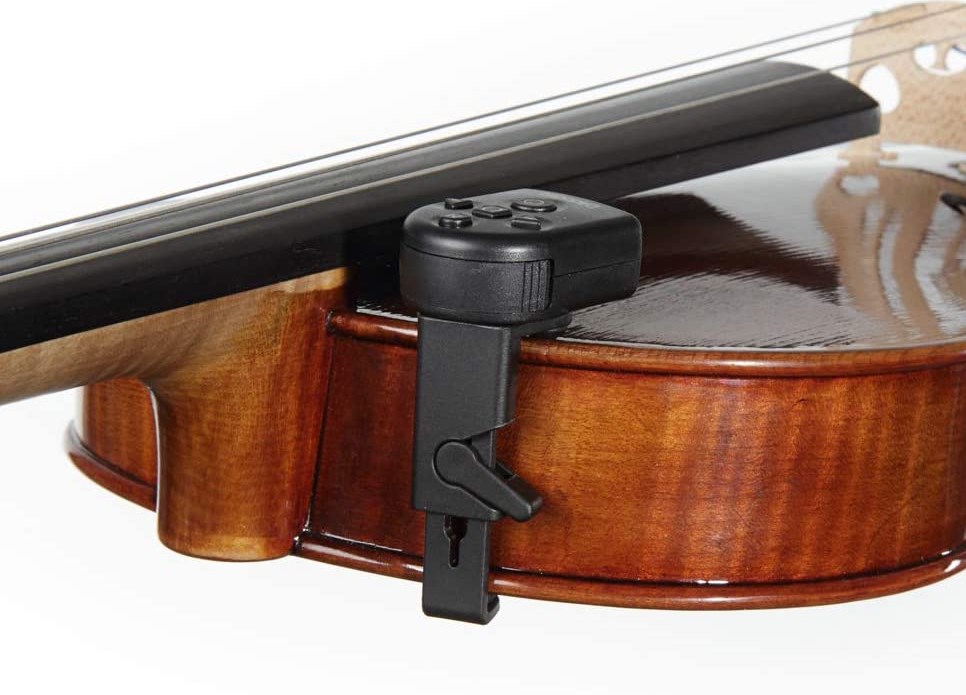
Knowing when you plan to use the tuner can also help you select the best one. Most violinists tune the four open strings when they start a rehearsal or individual practice session.
But as a student, you may want to use the tuner more often. That way, you can make sure your fingers hit the right spot on the strings to play the notes in tune.
The violin can go almost four octaves above middle C. If you plan to use a tuner for the high notes, you’ll need one that can recognize the differences between those higher frequencies.
Set Your Budget
You also need to think about how much money you have to spend on a good tuner. Some tuners are pretty cheap, so you don’t need a ton of extra cash.
However, some good tuners do cost a little more, and it’s worth it to splurge a bit. Either way, give yourself a price range that you’re comfortable with.
Then, you’ll be able to compare a few different tuners and get the right one for you.
The Best Violin Tuners
You should consider some of the best violin tuners, even if you know how to find the best violin tuner. The right tuner for your stand partner might not work well for you.
When looking for tuners, I looked at tuners with different designs and screens. I also considered tuners that were cheaper and some that were more expensive.
Without further ado, here are some of the best violin tuners to compare.
Snark X Clip-On Tuner
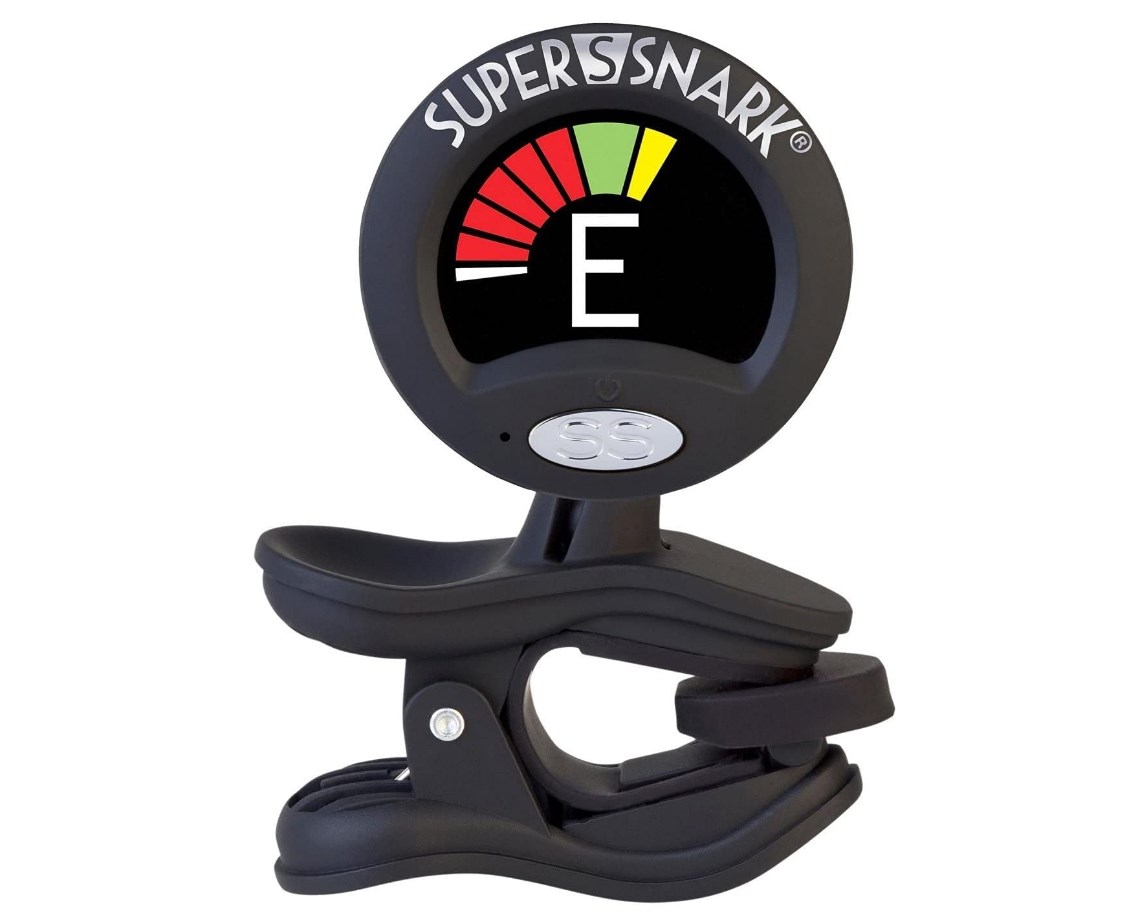
The Snark X Clip-On Tuner hooks onto your violin to help you accurately tune your instrument. It has a decent-sized screen that shows the note you’re playing and how in-tune you are.
That way, you’ll know how you need to adjust the string or your finger placement. Rubber joints are durable and help the tuner read your pitch.
This tuner also has long battery life, so you can use it for a long time before replacing the battery. It’s not too expensive, so it can be a great addition to any violin case.
Pros
- Easy to use
- Easy to read
- Hooks to your instrument
- Affordable
- Durable
Cons
- Can’t recognize all notes
D’Addario NS Micro Violin Tuner
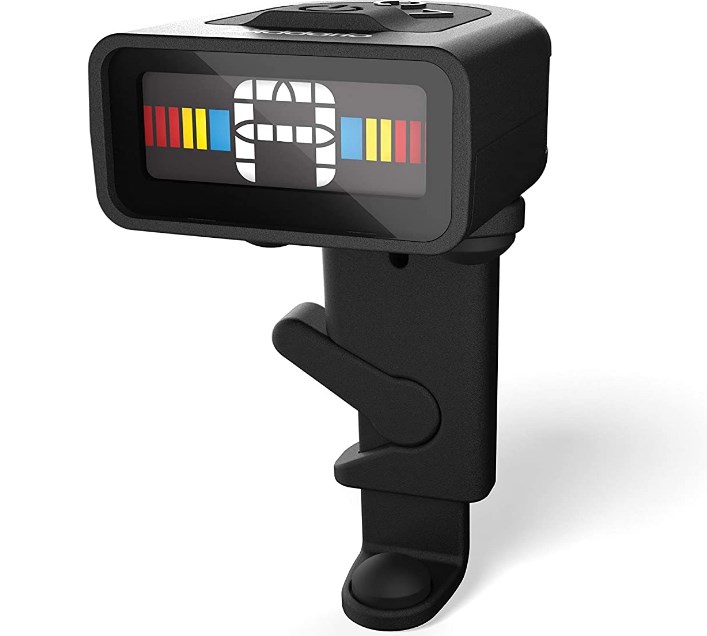
Another option to consider is the D’Addario NS Micro Violin Tuner. It hooks onto your violin and has a special lever to keep it from falling off during tuning.
However, it’s still easy to put the tuner on and take it off, so you can get straight to playing. Meanwhile, a reverse backlit screen uses three different colors to show how accurate your pitch is.
Unfortunately, the tuner only picks up 410 to 480Hz, which is about G#/Ab4 to A#/Bb4. That means you need to use your ear to tune the other three strings.
Pros
- Secure
- Easy to use
- Good screen
- Durable
- Not too expensive
Cons
- Limited tuning range
ChromaCast 440 Series
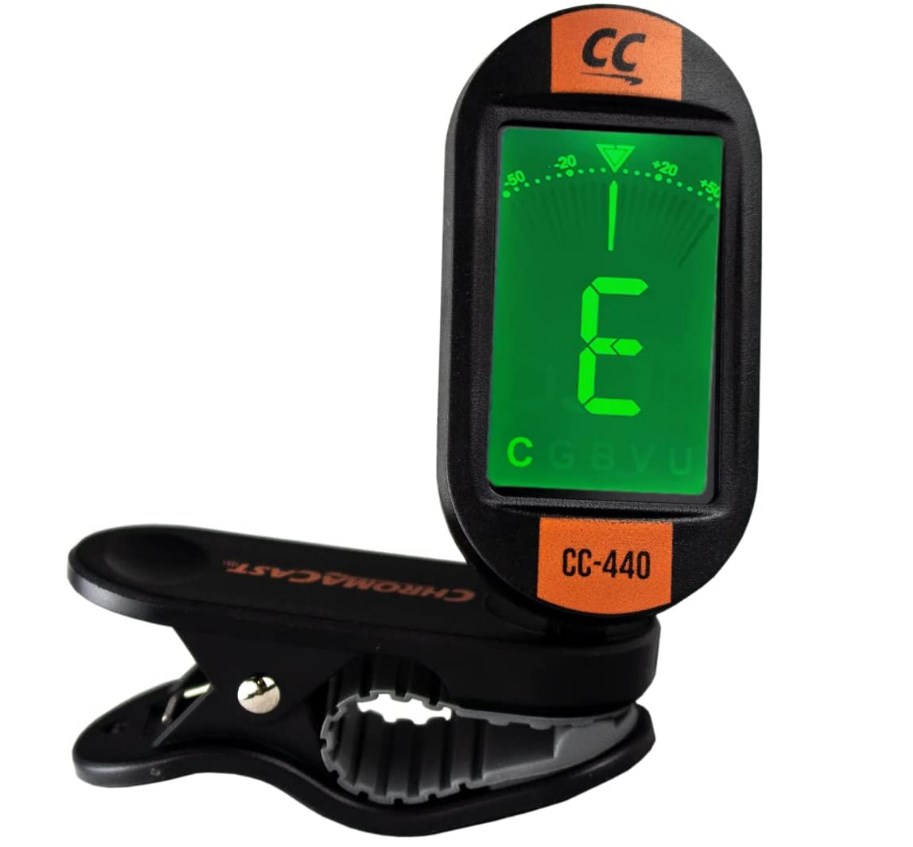
The ChromaCast 440 Series tuner is labeled as a guitar tuner, but you can use it for your violin. It’s small and features a green screen that can tell you how in tune you are.
You can choose the violin tuning mode to make sure you get your instrument to play the right pitches. And with a tuning range of A0 to C8, you can play the full range of a piano, which is more than enough.
Plus, you can choose from a few accent colors to show off your style. The tuner is also more affordable than a lot of other options.
Pros
- Easy to use
- Works with multiple instruments
- Wide tuning range
- Good screen
- Different accent colors
Cons
- Requires a specific angle to see the screen
KLIQ UberTuner
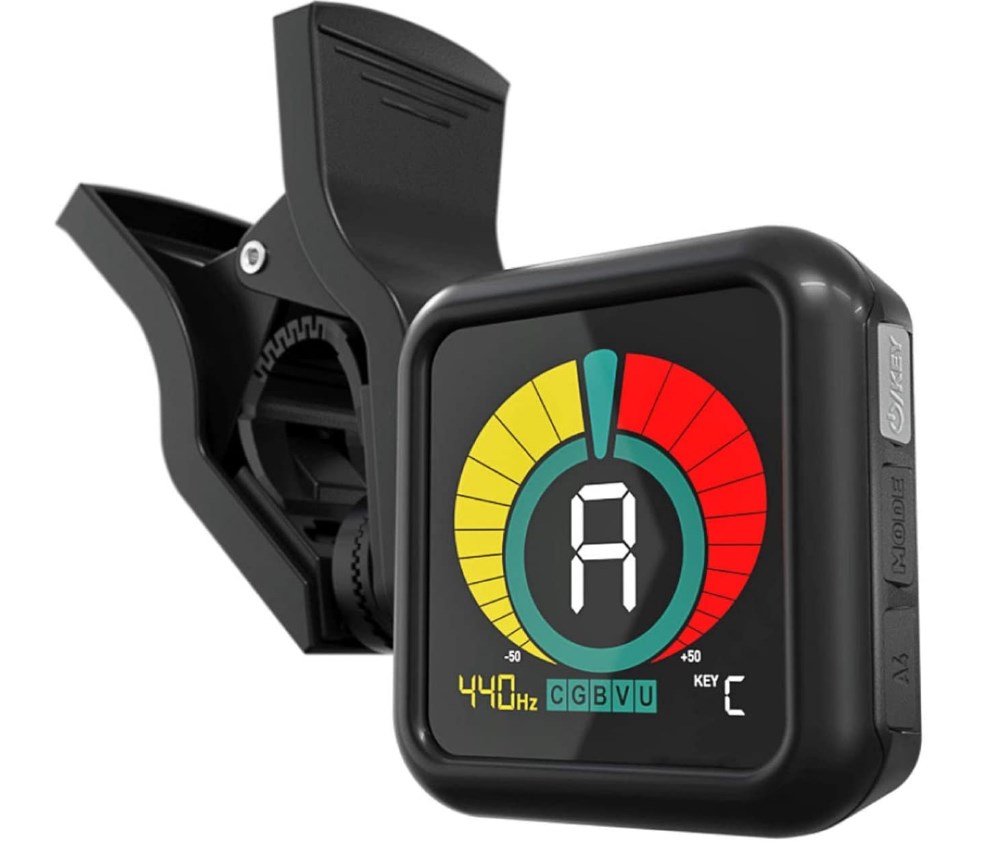
If you need a tuner that works quickly, check out the KLIQ UberTuner. This model has a sensitive Piezo sensor to feel the vibrations and detect pitch by feel for a more accurate reading.
You get a bright display that uses different colors, so you can easily read the results of your tuning. It’s also pretty durable, so you can use the tuner for a long time.
This tuner works even when there’s a lot of ambient noise, so it’s nice for orchestral musicians. And it won’t take up a ton of room in your case or bag.
Pros
- Easy to use
- Works fast
- Accurate
- Durable
- Good display
Cons
- Somewhat expensive
KLIQ MetroPitch
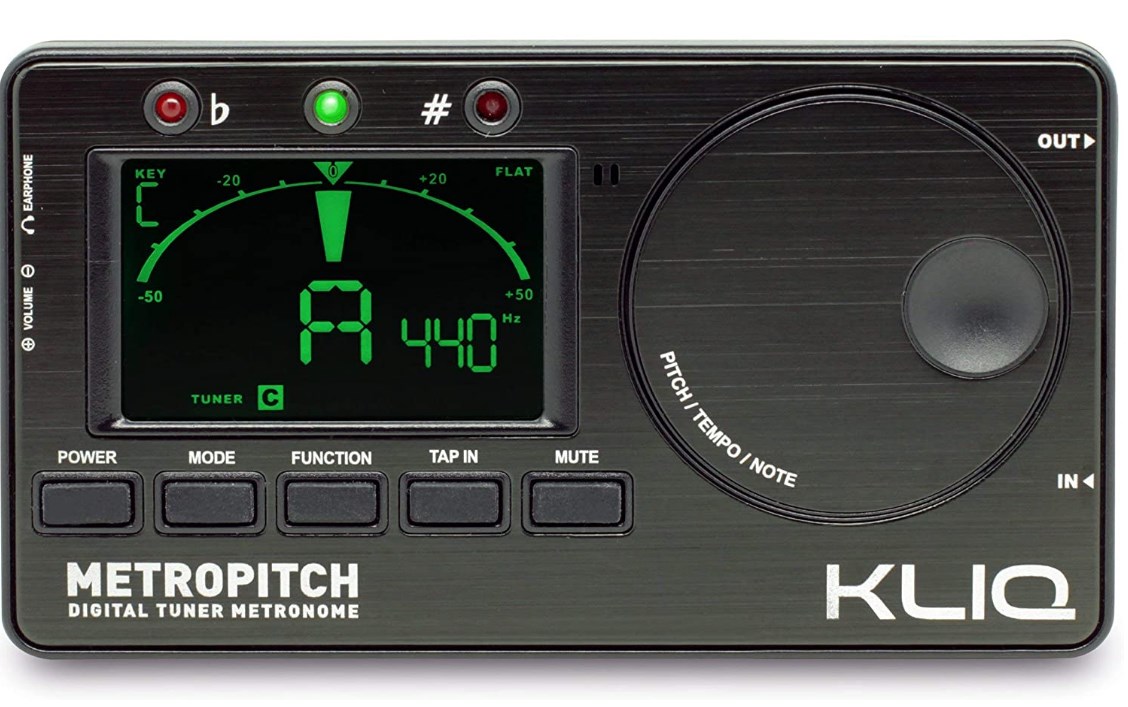
If you need both a metronome and tuner, the KLIQ MetroPitch might be just for you. The device helps you tune your violin, but you can also use it to keep the tempo steady as you play.
It even comes with a drone function (a steady pitch, not a flying drone) to help you practice hearing a note and playing it. The tuner display is easy to ready with green text and a black background.
You’ll be able to see if you’re in tune and if not, which way you need to adjust. While this tuner is a bit more expensive than some, the different features make the cost worth it.
Pros
- Easy to use
- Combination tuner-metronome
- Good display
- Comes in multiple colors
- Drone function
Cons
- A bit costly
Korg TM-60

The Korg TM-60 is my favorite tuner out there because it works with violins and other instruments. You can set the tuner on your stand and let it pick up your sound, or you can use the cable and connect the clip end to your violin.
That way, you’ll be able to accurately tune your instrument in an orchestra. And you don’t have to worry about where to put the clip so that you can see the tuner.
Like the KLIQ MetroPitch, this tuner also comes with a metronome and drone. Plus, the tuning range is from C1 to C8, so you can pick up any pitch you may need to tune.
Pros
- Easy to use
- Comes with a clip
- Works as a tuner and metronome
- Drone function
- Good quality
Cons
- Pretty expensive
FAQs About How To Find The Best Violin Tuner
Answer: You need a violin tuner to make sure that your strings are at the right pitches. If the pitches are wrong, the rest of your playing will be off.
A tuner can also help you practice where to place your fingers on the strings to play different notes. And you’ll make sure to play all of the notes in tune.
Answer: First, you’ll need to tune the third string of the violin, which produces the note A when open. You’ll tune that note to the right frequency based on your group’s requirements.
Then, you will need to tune each of the other strings to G, D, and E. You can tune them open by listening for perfect fifths, or you can press your finger on the strings to help match the pitch, for example, by playing an E on the A string.
Answer: You can use a tuner app on your phone, and there are tons of amazing options. I love the app Tunable, but it does cost money, though the price is small compared to a tuner.
An app is nice if you don’t want to carry around a tuner, but some apps aren’t always accurate. Apps can work for some tuning, but you may choose to supplement the app with a physical tuner.
Answer: If you need to tune your highest notes, you may want to use a physical tuner. That way, you can pick up the pitches and make sure they’re the notes you want.
Overall, physical tuners aren’t always better than apps. If you don’t have a big violin case, you may want to use your phone to tune on the go since you’ll probably already have your phone with you.
Answer: You should consider how you want to use the tuner and where. It also helps to think about your budget and if you want to put the tuner on your instrument or music stand.
Finally, be sure to consider if you can adjust the tuning from 440 to another frequency if necessary. Then, you’ll be able t tune to the right pitch.
Answer: You don’t need to get a tuner-metronome combo, but it’s nice to have on hand. Then, you don’t need space for both a tuner and a metronome, and you don’t have to worry about forgetting one.
However, having a separate tuner that hooks on to your violin can make tuning more convenient. Consider your preferences to decide which is best.
Final Note On How To Find The Best Violin Tuner
Knowing how to find the best violin tuner can help you play the violin better. You won’t have to worry if you’re out of tune and causing the whole violin section to sound bad.
I’d recommend getting the Korg TM-60, but it’s expensive. If you don’t want to pay that much, the KLIQ UberTuner is also worth a try.
Looking for more interesting readings? Check out:

